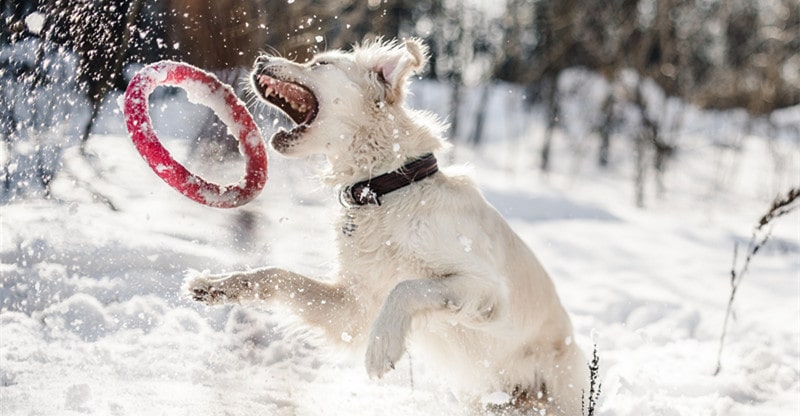6 Possible Reasons Why Dogs Won’t Play With Toys
When you adopt a dog, you look forward to playing with it. Many dogs love to play and have more energy than their owners can keep up with. They can pull on ropes and fetch balls all day and night and never get bored. Not all dogs enjoy toys, however.
There are many pets who refuse to play with them. There are many reasons your dog may not be interested in toys. Finding out the cause can help you determine if it’s a problem that can be fixed or one that you just have to accept.
Stress
Dogs that are feeling stressed aren’t like to play with toys. If you have just adopted your dog, it may take him a while to get used to his new environment. When a dog feels stressed or nervous, it isn’t likely to play with anything. You can help by making your pet feel comfortable in his new home. Introduce the toys, but don’t force play. Once your pet feels more comfortable in his new home, he will likely start to explore, play with toys, and loosen up in general.
Illness
If your dog isn’t feeling well, it may refuse toys. This is easy to notice in dogs that play with toys often. If you just got your dog, and it hasn’t been playing with toys, you should consider taking it to the vet for a checkup. Your pet can tell you if your pet is sick. In most cases, dogs will begin playing with toys again once they recover. Illness is not always apparent, so even if your dog seems to be okay, playing may cause some health problems to flare up or become worse.
Ignorance
Believe it or not, some pets simply don’t know how to play. This is especially true for puppies who have never played with them before or shelter dogs who have spent their lives focusing more on survival than fun. Some dogs may never develop a desire or and understanding of the concept of playing. Some can be taught to play with the right methods and some patience.
If you have another dog who enjoys playing with toys, allow it to play with your dog who doesn’t enjoy toys. Dogs can learn to play by watching other dogs and interacting with them. You can also teach your dog to play yourself. Show your dog how to catch a ball and bring it back, run a rope across the floor in front of your dog to get it interested, and squeeze or toss stuffed animals to show your dog what to do.
Your dog may become interested in the toys just as a way to spend more time with you, and eventually learn to play with them on his own.
Pain
If your pet is in pain, he’s not likely to play with toys. Some dogs, especially older ones, suffer from muscle pain, hip dysplasia, and arthritis. Moving around, jumping to play with toys may be too painful for them. You may notice that your pet carries his toys to his bed and sleeps with them, but no longer plays with them physically. This should tell you that the dog still enjoys the toys, but can’t play with them like he wants to.
If your dog has not yet been diagnosed with a pain disorder, you can seek veterinary care for him. Some medications can help ease the pain so your dog can become actives. Dogs that are injured may also refuse to play, even if the injuries don’t appear to be severe or noticeable. In fact, many owners only know their pets are injured or in pain when they notice that they no longer enjoy playing with their toys.
Fear
Some toys are scary for pets. Dogs see things differently than humans, so what looks harmless to us may seem threatening to them. Some dogs are also afraid of loud noises. If your dog is easily scared by a loud vacuum cleaner, he may also be frightened of toys that make noise. If he seems scared of squeaky toys or toys that make noise, offer him a quiet one instead.
Your dog may eventually overcome his fear of noise, but forcing a loud toy on your pet will only make the anxiety worse. Give him time and introduce noisy toys for short periods of time until the reaction becomes less severe.
Boredom
Just because you think your dog might have fun playing with a particular toy, doesn’t mean your dog feels the same way. Just like humans, all dogs are different and have different interests and ideas about what’s fun. If your dog isn’t playing with a toy, it may be simply because it doesn’t like it.
Try introducing a new toy to your pet. Don’t just pick a new toy, choose one that your dog would play with differently from the one it refused. If your dog doesn’t like playing with ropes, try throwing him a ball to fetch. Keep trying different types of toys until you find one your dog likes.
About the Author: Lindsey Harper has always been a pet lover since she got her first puppy as a kid. She is the co-founder of AvidPup.com, a pet blog where guides and tips are shared so dog lovers can raise their pups healthy and happy.



